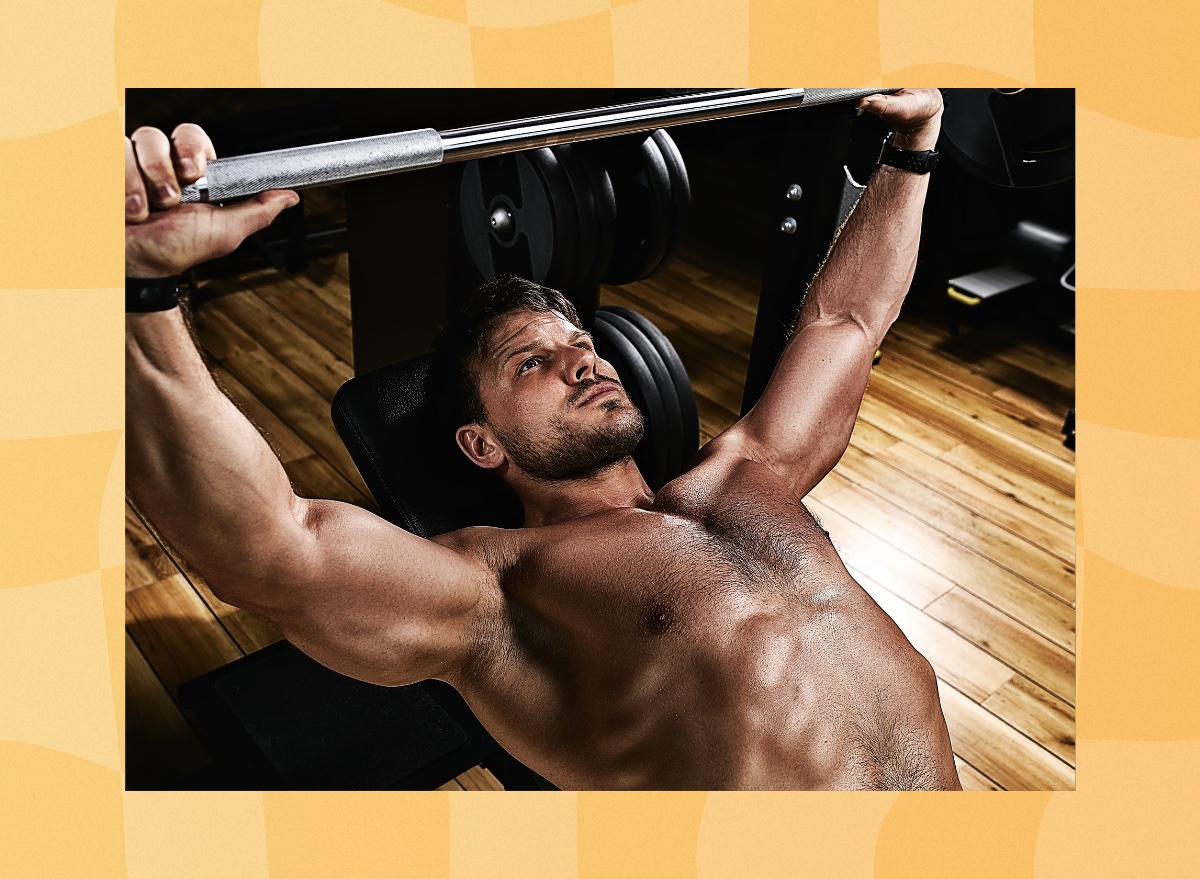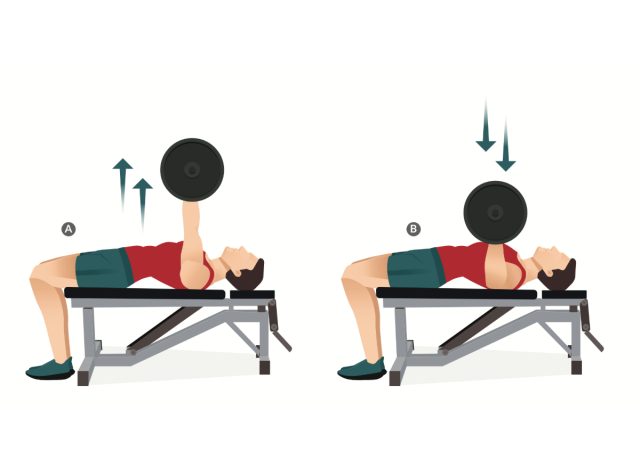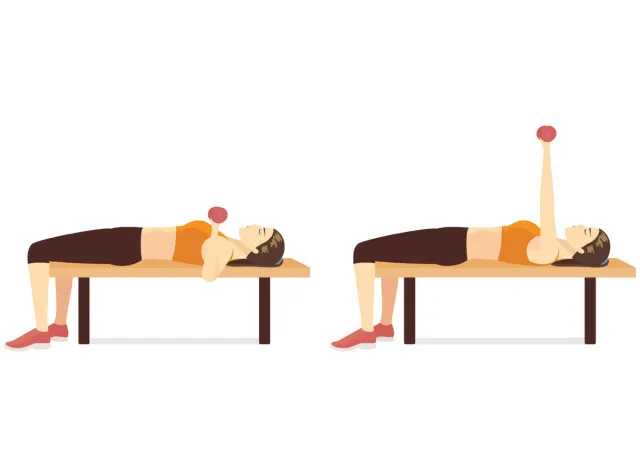The #1 Best Bench Press Workout To Increase Strength & Muscle

The almighty bench press is a lift that will forever reign supreme. It’s an essential component of most strength training regimens for good reason. The bench press earned its acclaim as a potent compound exercise, renowned for its ability to foster significant muscle gains in the upper body. That’s why I’m breaking down my #1 best bench press workout to increase strength and muscle.
Targeting key muscle groups, including the chest, shoulders, and triceps, the bench press stands as a testament to one’s prowess in the gym. So, if you’re eager to boost your upper-body gains, listen up. I’ve gathered invaluable insights from my extensive background in strength and performance and present six bench press variations tailored to propel you toward greater strength and muscle development.
Barbell Bench Press

A bench press workout wouldn’t be complete without… well, bench pressing! This classic exercise stands as a cornerstone for enhancing upper-body strength and muscle mass. It’s the go-to barbell movement for targeting your chest, shoulders, and triceps, delivering exceptional results.
Start by lying flat on your back with the barbell positioned above your chin and your feet flat on the ground. Your hands should be placed shoulder-width apart, gripping the barbell securely. Engage your core muscles and carefully lift the barbell off the rack. Lower the bar toward your chest by bending your elbows, keeping control throughout the movement. Once the barbell reaches your chest, push it back up in a straight line until your arms are fully extended, locking out at the top.
If your goal is packing on muscle, aim for three to four sets of eight to 12 reps with 90 seconds of rest between sets. For strength, complete three to five sets of five reps with 120 seconds of rest between sets.
Barbell Pause Bench Press
Incorporating a pause into your bench press routine is a surefire way to enhance strength and optimize force output during the drive phase of the lift while increasing the perceived intensity of each repetition. Adding a deliberate pause at the chest position eliminates the advantage of the stretch-shortening cycle, relying on greater measures of force (strength) to drive the bar.
Lie flat on your back with the barbell positioned above your chin and your feet flat on the ground. Your hands should be shoulder-width apart, gripping the barbell securely. Engage your core muscles and carefully lift the barbell off the rack. Lower the bar toward your chest by bending your elbows, keeping control throughout the movement. Once the barbell reaches your chest, pause for one to two seconds, then push it back up in a straight line until your arms are fully extended, locking out at the top.
For strength workouts, complete four to five sets of three to five reps with 120 seconds of rest between sets. If muscle size is your goal, three sets of eight to 12 reps with 90 seconds of rest will do just fine.
Close-grip Barbell Bench Press
The close-grip bench press stands out as my preferred choice for building muscle mass, particularly as it engages multiple muscle groups in the upper body. This variation effectively targets the inner chest, shoulders, and, notably, the triceps. Whether integrated as a primary strength exercise or added at the conclusion of traditional bench press sets for high-volume drop-down sets, the close-grip variation offers potent benefits for upper-body development.
Lie flat on your back with the barbell positioned above your chin and your feet flat on the ground. Your hands should be placed inside shoulder-width. Engage your core muscles and carefully lift the barbell off the rack. Lower the bar toward your chest by bending your elbows, keeping control throughout the movement. Once the barbell reaches your chest, push it back up in a straight line until your arms are fully extended, locking out at the top.
Performing three sets of 12 to 15 repetitions is an effective strategy for maximizing muscle size gains, while opting for three to four sets of eight to 12 reps seamlessly blends strength and size.
Barbell Incline Bench Press
The barbell incline bench press is a dynamic exercise that targets the upper chest, shoulders, and triceps. Employing an incline bench set at a 30 to 45-degree angle effectively redirects the emphasis to these areas, resulting in heightened engagement compared to alternative bench press variations.
Begin by loading a barbell and adjusting an incline bench to a 30 to 45-degree angle, positioning it under the bar. Sit down and grip the bar with an overhand grip slightly wider than shoulder width. Inhale, engage your core, and unrack the bar, holding it over your chest with fully extended elbows. Lower the bar toward your upper chest while inhaling, lightly touching it at the bottom, then exhale as you press the bar back to the starting position.
For muscle size, aim for three sets of eight to 12 reps. To build strength, opt for four to five sets of five reps.
Dumbbell Bench Press

The dumbbell bench press offers unique advantages over the traditional barbell bench press for enhancing strength and size. (To clarify, this doesn’t mean that the dumbbell version improves absolute strength more than the barbell bench press.) Dumbbells allow you to train through a greater range of motion, engage stabilizing muscles to a higher degree, promote balanced muscle development, and reduce muscle imbalances.
I like the dumbbell bench press, especially for beginners, because of its unilateral nature. This compound “bilateral” exercise requires each arm to work independently during the press, preventing one side from compensating for the other, thereby addressing strength discrepancies. Moreover, the freedom of movement provided by dumbbells enables a more natural and ergonomic hand position, accommodating individual anatomical differences and reducing strain on the wrists and shoulders.
Start by sitting on a flat bench with dumbbells resting on your thighs. Lie back and position the dumbbells at shoulder height, palms facing away from you. Inhale, brace your core, and press the dumbbells upward explosively until your arms are fully extended. Lower them in a controlled manner until they align with your chest, then exhale as you press them back up. Repeat for the desired number of reps, then carefully return the dumbbells to your thighs to finish.
Aim for three to four sets of five to eight reps for strength gains and three to four sets of eight to 15 reps to target muscle size.
Dumbbell Incline Bench Press
The dumbbell incline bench press combines the strength, size, and stability benefits of the traditional dumbbell bench press while placing emphasis on the upper chest, shoulders, and triceps. By incorporating incline and decline variations, you can effectively target specific muscle groups and areas, optimizing muscle size gains throughout your upper body. Want to kick it up a notch? Use alternating variations, switching from one side to the next.
Start by adjusting the bench to a 30 to 45-degree angle. Sit on the incline bench with a dumbbell in each hand resting on your thighs. Lie back and bring the dumbbells up to shoulder height, palms facing away from you. Inhale, brace your core, and press the dumbbells upward explosively until your arms are fully extended. Lower them in a controlled manner until they align with your upper chest, then exhale as you press them back up. Repeat for the desired number of reps, then carefully return the dumbbells to your thighs to finish.
Aim for three to four sets of five to eight reps for strength gains and three to four sets of eight to 15 reps to target muscle size.









